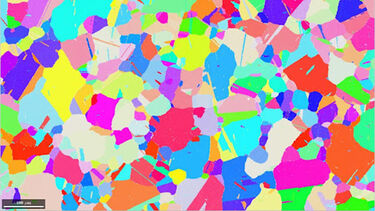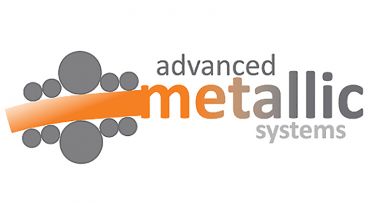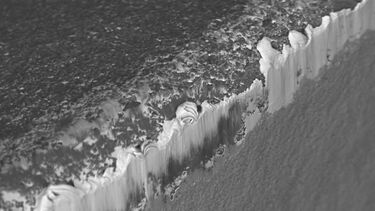How do tools wear when machining the most advanced materials?
Exploring the relationship between tool wear and subsurface damage when turning Nickel alloys with Alumina coated tools.

Nickel Superalloys are found in the hottest areas of aero-engines, and continue to be developed in order to increase engine efficiency. The incredible high temperature strength of these alloys leads to rapid tool wear during machining, adding substantially to the cost of production in terms of both time and energy. This case study investigates how alumina coated tools wear when machining Nickel Superalloys, and how this relates to the microstructure of the workpiece material.
​​Although originally developed for machining steels, alumina coated carbides are widely used for machining Nickel Superalloys. Despite this, there exists little published research on how these tools wear under these conditions, and how this may differ from observations made during steel machining. To address this problem, short times in cut were employed to study the wear of the outermost alumina layer when turning a Nickel Superalloy (RR1000) in a fine grain and a coarse grain condition. The worn cutting inserts were then analysed using advanced characterisation techniques such as scanning electron microscopy (SEM), energy dispersive spectroscopy (EDS) and electron probe microanalysis (EPMA).
Results have shown that rapid wear of the rake face occurs during the first turned meters, due to a combination of chemical wear, plastic deformation and attrition wear. Larger fluctuations in machining forces were detected when turning the larger grained material, promoting micro-fatigue and significant notching of the alumina coating, culminating in a higher overall wear rate. Investigating the machined surface, dissolution of precipitates was observed in the first 0.2 microns, indicating local cutting temperatures in excess of 1000°C. When compared to our previous study using a Nickel Iron Superalloy (IN718), reduced levels of attrition wear were detected, as well as higher levels of chemical wear. These results highlight the importance of microstructure and alloy chemistry on wear behaviour, and will aid coating development for the next generation of cutting tools.
The aerospace sector must meet net-zero targets by 2050, as such, there is a need to rapidly develop new technologies, as well as increasing the efficiency of existing manufacturing processes. Machining is the dominant method for producing functional components with a high level of dimensional accuracy. With the advancement of additive manufacturing and other disruptive near-net shape technologies, targeted at reducing buy-to-flight ratios, the role of machining research is as important as ever. Recently, there have been staggering advancements in understanding how alumina coatings wear when machining steels, representing the culmination of almost two decades of targeted research. This has revealed highly complex behaviours that warrant yet further investigation.
Nickel superalloys represent a smaller, yet significant, portion of the machining market share. Unfortunately, this has led to reduced investment dedicated to studying the machinability of these alloys, especially in terms of tool wear. In this project we have begun to "close the gap" with Steel machining research, offering new insights into not only the degradation of cutting tools but also the relationship this has with the microstructure of the workpiece. We believe this will help not only tooling suppliers to develop better solutions, but also give aerospace companies, such as Rolls Royce, a fresh perspective on how they can analyse tools and develop more optimised material specific machining processes.
Equipment used:
Inspect F50, Sorby
JEOL 7900, Sorby
Zeiss EVO LS25-1204, RTC (Sandvik sponsored students only)
Hitachi TM3030, Leonardo Lab
JEOL JXA 8530F PLUS, Sorby
Alicona Infinite Focus SL, Leonardo Lab

Study with us
Study for a fully-funded PhD or EngD in Advanced Metallic Systems to explore innovative materials and manufacturing routes to increase sustainability and performance.

